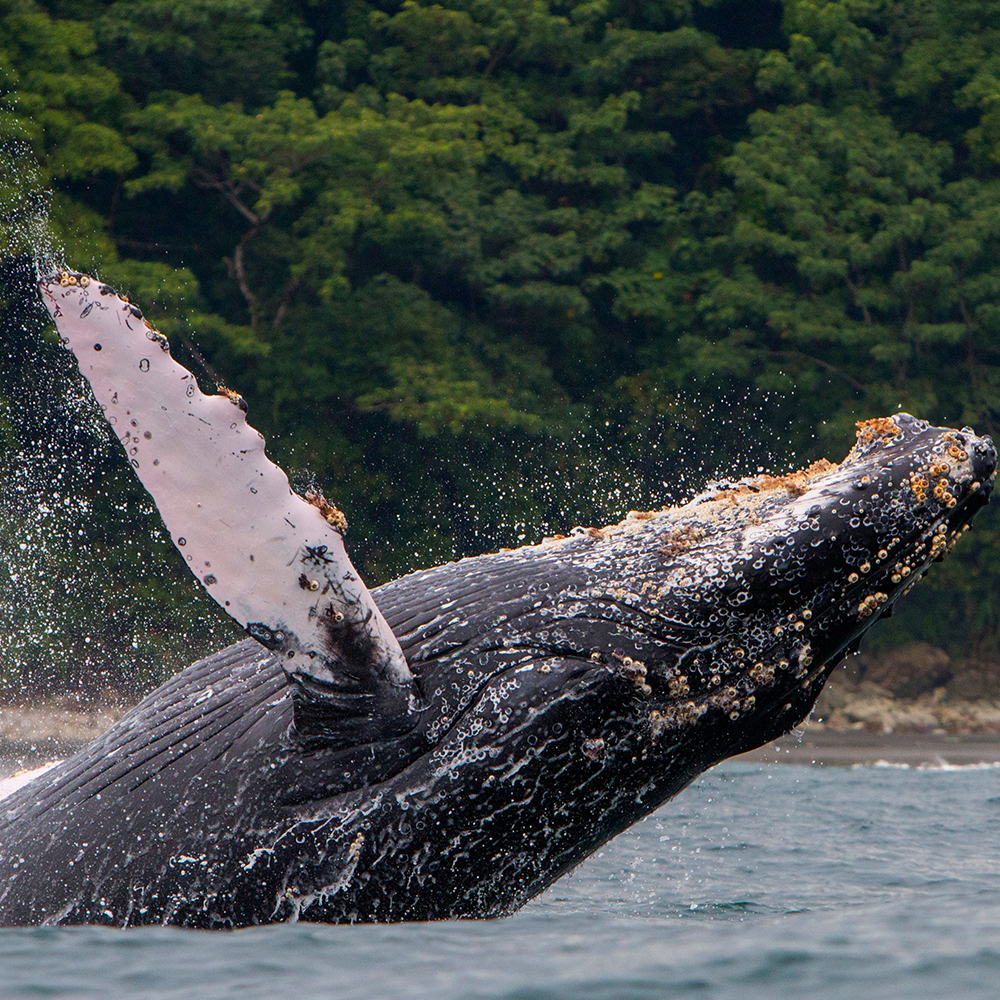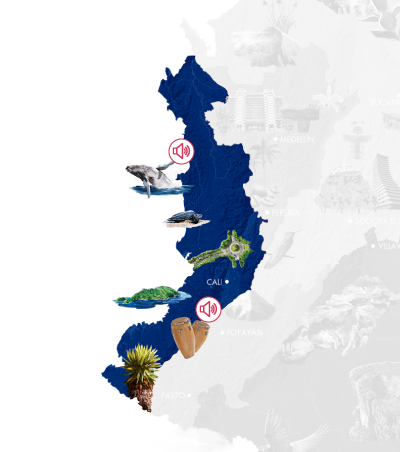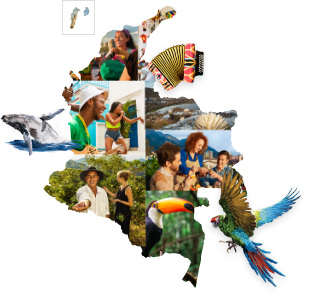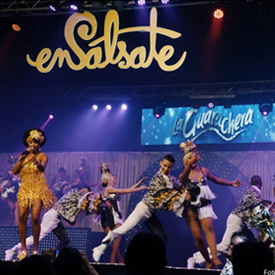Chocó, Colombia, a land of vindication that celebrates life and death

Credit: Oscar Garces // Shutterstock.com
Of impregnable geography, difficult to access and travel, the department of Chocó is a protected land, of African and indigenous heritage, which between colors, songs and dances celera nature, life and death.
The department of Chocó is a territory barely touched by man, with great natural and mineral riches. It is characterized by having beaches in two seas, some of dark sands in the Pacific, and the others of light sands on the Caribbean coast. Also, an immense jungle and three rivers: Atrato, San Juan and Baudó, which make it a perfect place to get in touch with nature and perform activities such as ecotourism and water sports.
Conset of paradises
Chocó is a destination full of natural jewels to discover. One of the emblematic places is Bahía Solano, which brings together the jungle and its trails, waterfalls such as Tigre and Chadó; corals, mangroves and extensive beaches such as El Valle. A lush place where visitors can do humpback whale watching, turtles and migratory birds.
For those looking for adventure, Nuquí is a paradise with hot springs, ecological trails and beaches for surfing, diving or kayaking, among which are Terco, Pico de Loro, Terquito, El Chorro, Playa Brava, Pela Pela and San Juan de Tornil.
Capurganá, on the other hand, offers tourists ideal beaches for rest, as well as nature reserves and waterfalls with crystal clear water.
While Tutunendo, located 20 minutes by road from Quibdó, has a route of almost two kilometers sheltered by abundant tropical jungle and the Tuntunedo River, whose waters form a bluish-green mirror where the sky and the natural wealth of the place are reflected.
Featured: Download the magazine about the department of Valle del Cauca in the Colombian Pacific and discover all the activities that need to be done.
Land of claim
The Afro-descendant community of Chocó struggles remembering of an unjust past of slavery and mining. The Muntú Bantu African Memory Center Museum in Quibdó is the largest in Colombia focused on rescuing Afro-descendant culture and its history.
The indigenous people, on the other hand, also seek to defend their heritage and riverside, jungle and mountain territory, spaces to which they were confined after the settlement of African freedmen and the paisa expansion.
In tourist terms, the Kipara Te Ethnovillage stands out, a center of the Emberá Dóbida community, where you can find typical dishes of the region, trails for bird and frog watching, body painting and handicrafts such as chaquira weaving, werrengue basketry and wood carvings.
Flavour Mix
The gastronomy of Chocó mixes Afro, mestizo and indigenous elements that give it a great variety of flavors and techniques.
The most famous dishes are the sancocho of 4 meats (game meat, dried meat, smoked meat and chicken); rice with sausage, chontaduro with salt, patacón with cheese, smoked casing sancocho and wild cilantro, corvina tapao and fish encocados. And among the drinks stands out the wine based on sugar cane, spices, herbs and roots.
Highlight: There are currently several initiatives in the form of traditional workshops, where Afro-Chocan women teach young people and tourists to prepare dishes with game meat and fishing, as well as traditional conservation processes.
The department also has a strong tradition in curandería and traditional medicine present in the Afro and indigenous Embera-Wounaan-Tule customs, which reproduce ancestral knowledge in the use of plants, liquors and animal parts for healing rituals.
Some of the home remedies that are used today and that can be easily found in the markets and homes of the population are: borojó for thekidneys, plantain for high blood pressure, bonche for soft hair, botoncillo for the liver, Santa María Boba for headache and churco to cure rashes of the tongue and palate.
During childbirth or as a way to induce qualities in newborns, balsamic rubs are used, which are mixtures of liquor with herbs and animal parts.

Alt: Fish for sale in Choco, Colombia.
Credit: GAT0 // Shutterstock.com
Capt: Fish, cheese, coriander, basil, pennyroyal, oregano, garlic, cassava, banana and corn,some of the typical ingredients of Chocoan cuisine.
Celebration Culture
Music and partying are constant expressions in Chocó. From June 14 the festivities of San Antonio de Pauda are celebrated and from July 16 that of the Virgen del Carmen.
However, the most important are the Fiestas de San Francisco de Asís "San Pacho", which are celebrated in Quibdó from September 20 to October 4 and are Intangible Heritage of Humanity declared by UNESCO.
San Pacho exorcises the evils that were experienced during the year through allusive floats, burning of dolls and bundes (dances incommunity), to the sound of traditional music of chirimía.
The chirimías are a musical ensemble composed of flute, tambora, male and female bass drums, clarinet, euphonium and requinta or redoblante, which accompanies the parties, ceremonies and street processions, interpreting tamboritos, jotas, pasillos, contradanzas, polkas, mazurcas, bullerengues, puyas, porros, cumbias, currulaos and mapalés.
Featured: Get to know the magazine about the department of Chocó, to know other emblematic celebrations of the region.
In the Chocoan music, the praises and funerary songs also stand out, which today unite the religious with the mundane, as well as the cooing, lullabies that are used in wakes and in Navidad.

Alt: Humpback whale jumping out of the water off the coast of Nuquí in theChocó valley.
Credit: Guillermo Ossa // Shutterstock.com
Photo caper: The sighting of humpback whales takes place between the months of July and November, when hundreds of cetaceans arrive in Colombian waters to give birth to their young.







